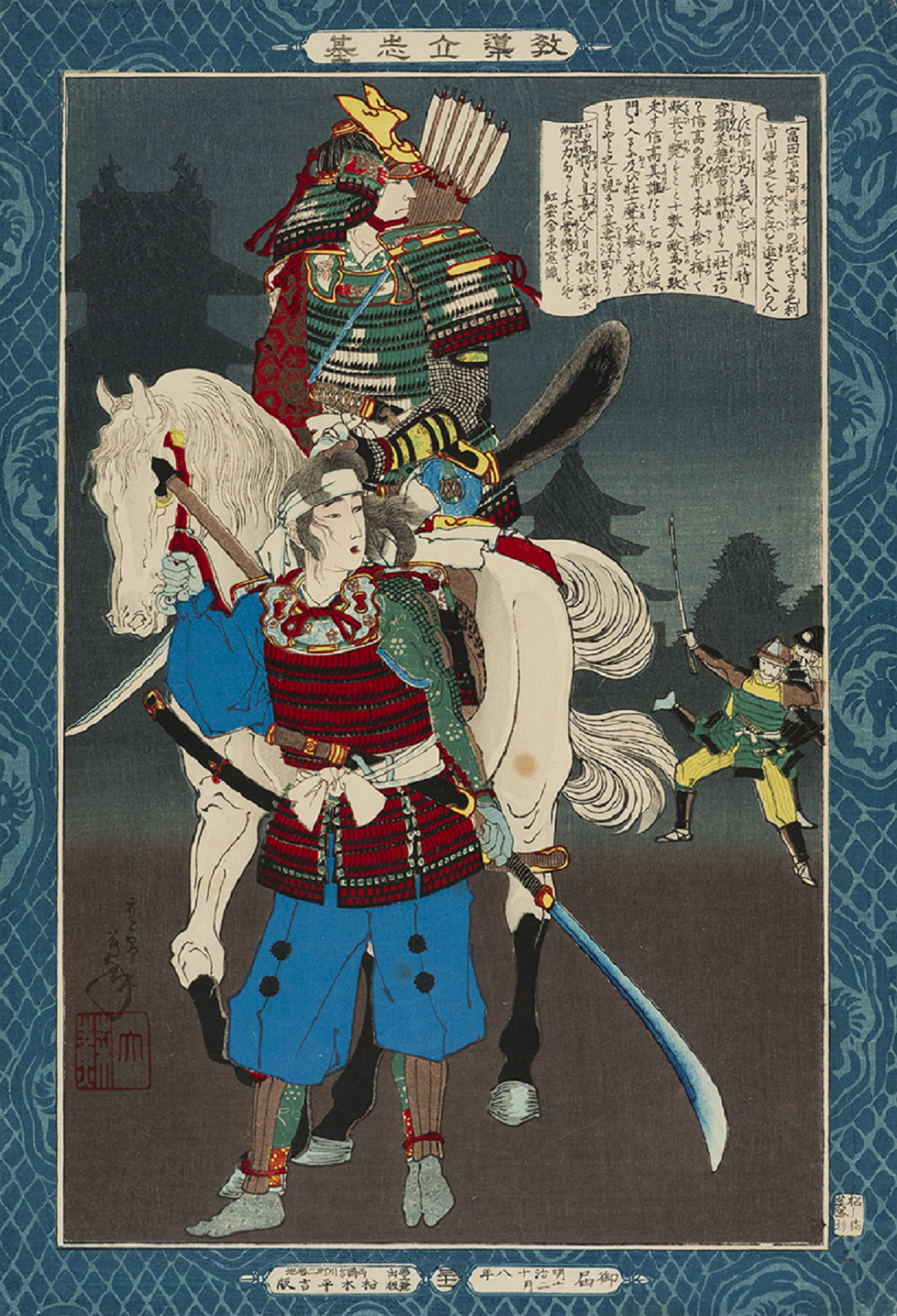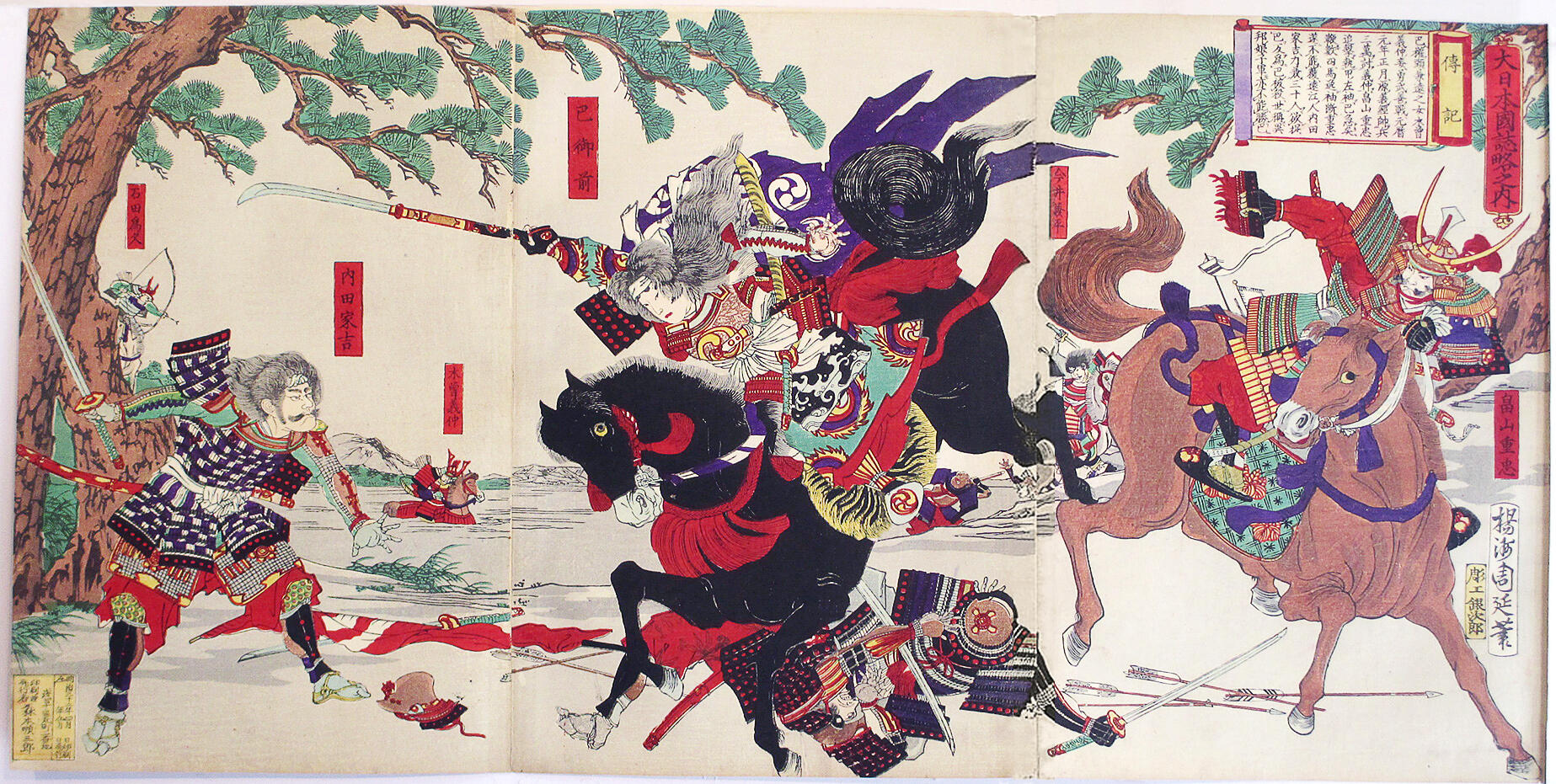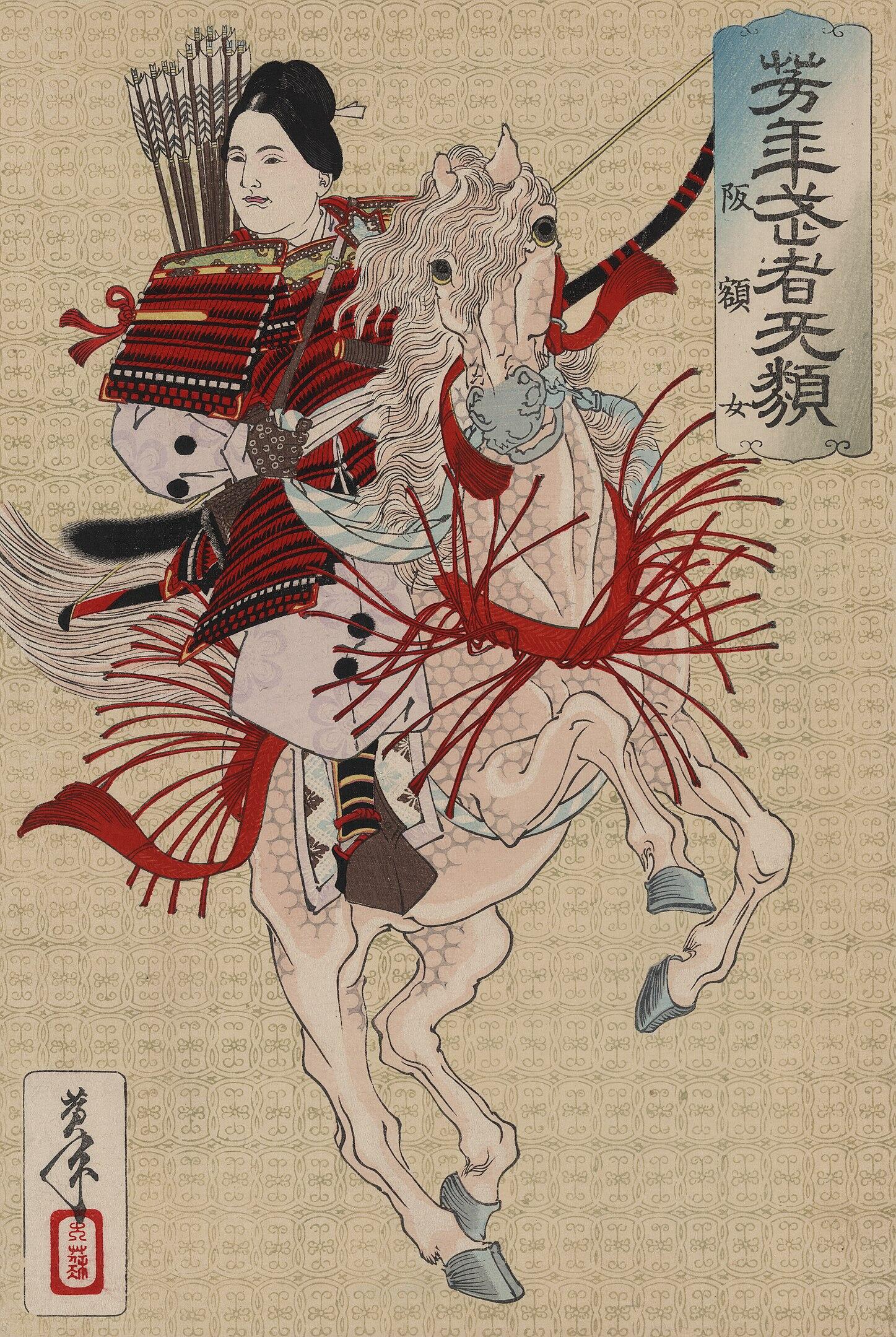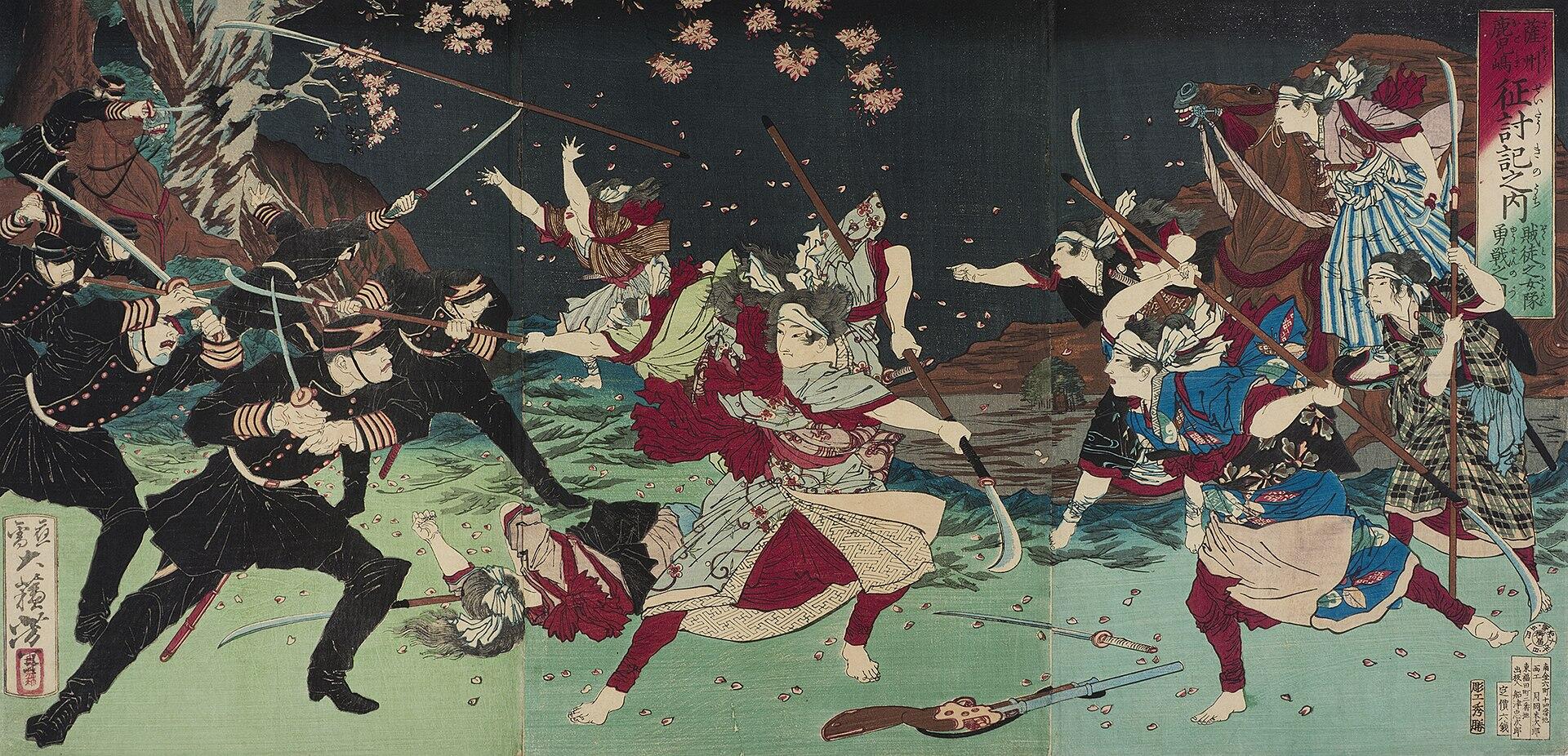Typically, when we think about warriors, names of men emerge. However, one class of warriors in Medieval Japan defies all stereotypes. The onna bugeisha, the class of female warriors, were just as skilled, brave, and determined. In this article, we explore their legend, their lives, and their legacy.

Were There Female Samurai?

Pop culture, from anime to films, typically depicts only male samurai. Hua Mulan is a popular depiction of the archetypal woman warrior, but that female fighter was Chinese.
Even the Japanese film catalogue downplays Onna-musha's role in Medieval Japan. So, were there female samurai - women warriors, in the Land of the Rising Sun?
Yes, is the short, quick answer. However, they were not recruited, inducted into service, or formed into brigades, as normally happens when building a military corps. Typically, they were wives and mothers, tasked with maintaining their households while their husbands battled.
Who Were the Female Samurai?
These fighters hailed from a noble class of feudal samurai (bushi). They were women with land and inheritance rights, though society preferred that a steward could oversee those holdings.
These women received training, but only as much as needed to defend their homesteads and families. Should war break out, they might need to defend their honour, so mastering fighting skills was essential.
Evidence exists that onna musha fought alongside men on the battlefield.
In a later chapter, you'll meet some of these fighters, and learn of their exploits. For now, we must discover the weapons these fighters used, and the training they had. We also need to look at how they fit into Medieval Japanese culture.
The warrior class of feudal Japan accepted female warriors, but that acceptance clashed with cultural standards. Social norms in the shogunate era didn't allow women to do heavy, difficult work. A woman could not choose a career as a samurai. But, if they happened to slip into the role, no male samurai would send them home.

Onna-Musha Weapons and Training
Today's society encourages women to study the martial arts and take defence training, for their own protection. These initiatives aren't so different from the training females received under the shogunate. Only the reasons varied.
Should war break out, women would be the second line of defence, to protect land holdings, and preserve culture. Men - the samurai - were the first line of contact in warfare, of course. That division of labour hints at a distinguishing feature of training and weaponry that the onna-bugeisha received.
As the onna-bugeisha were expected to match samurai fighting skills, their training and weapons matched the men's, except in one crucial regard.
The men wielded heavy swords that featured full-length, double-edged blades. By contrast, the women's smaller sizes and comparatively weaker arms demanded weapons more suited to their frames. Not to say that women never fought with swords, but their weapon of choice was the naginata.
A type of pole weapon, with a relatively short, single-edged blade mounted on a long pole.
The blade's long handle (its tang) fits into the pole. The fighter can shorten their weapon's reach when they separate the blade from its pole, by removing the peg that keeps them fastened together.
This weapon's flexibility, reach, and light weight made it the ideal tool for women's fighting skills. However, the onna mushi were not the only fighters to use it. Male foot soldiers found it useful, as they could swing the blade from afar, and still hit their enemies.
As this clip demonstrates, fighting with a naginata demands martial arts skills. Women warriors were trained in the martial arts, with and without weapons. It was not uncommon for them to fight in hand-to-hand combat, where those skills are vital. For fighting in close quarters, they used kaiken daggers and knives.
The onna bugeisha must also have been keen archers. Relying on artwork from the period, we see several onna bugeisha poised to fire arrows while on horseback, as the enemy runs away. Whether those skills resulted from training, or were something they picked up from their male counterparts, is not known.
Such artwork also depicts female warriors swinging katana, the standard issue swords of male fighters. Indeed, a photograph of Niijima Yae shows her with a katana and a rifle. She was born into a samurai family. Her father was an official gunnery instructor.
It was uncommon for women to use firearms.
However, a few exceptions stand out, such as Niijima Yae.
The samurai culture's dictates depended on discipline, fearlessness, and ferociousness. Traditional views of women did not include those qualities. So, while onna mushi could, and did, fight alongside men, their valour was often downplayed.

Samurai Culture and Women Samurai
As noted above, samurai culture revolved around discipline. The limitations this culture placed on women demanded that they be even more constrained than men. Though both male and female warriors chose their targets carefully, women had far more hoops to jump through, just to engage in battle.
For instance, Nakano Takeko fought in the Battle of Aizu, during the Boshin War. She and a contingent of 40 other female fighters offered their services to the Aizu leadership.

The men did not want women fighting alongside them. As the males made their way to the battle, Takeko led her band of female warriors along a different path, to the same fight.
Fought between two warring clans from 1180 and 1185, these battles yielded one of the most renowned female samurai, Tomoe Gozen.
Standard practice for female warriors was suicide, if capture was imminent. Their training included how to slit their own throats, or drown themselves, rather than being taken by the enemy.
Onna Bugeisha Beyond the Battlefield
Ageing male samurai, no longer fit for battle, could and did enter politics. That path was closed to women. Once their fighting days were over, they were expected to return to their former status as homemakers, child-bearers, and husband-caterers.
History records a few exceptions to that standard. Yodo-dono (1569-1615) became the power behind the throne of Osaka Castle, ultimately taking her husband's place at political events, after his passing. This was acceptable, as she was her son's guardian and regent, until he grew old enough to take power.
Famous Female Samurai in Japanese History
*This photo is most likely an actress dressed at the famous warrior, not Nakano Takeko herself.
Across the shogunate era timeline, we find records of valiant onna bugeisha deeds. They're not as easy to find, nor as plentiful, as tales of male warriors'. Still, the artwork depicting women in battle tells its own tales. And, curiosity about these female fighters spurs more discoveries about them.

The Decline and Legacy of the Onna Bugeisha
During the Edo period, when Tokugawa shogunate ruled, the onna musha lost much of their status. Influence from the neo-Confucianist ideas during that era placed women in the home, while the men pursued outside work.
A Distinction of Terms
Little was written about female warriors' exploits, due to the social and cultural norms of the time. After all the warring, historians wrote of legendary exploits, assigning men to the most stellar roles. Erasing female fighters was not entirely successful, for we do know a little bit about them.
For one, the difference between offensive and defensive forces among women fighters. We've used their titles interchangeably throughout this article, but a distinction exists:
defensive combat fighters.
offensive combat fighters.
The cultural tendency to overlook women's accomplishments made it easy to dismiss female fighters. Their last battle, saw them banished into the fog of history. Today, we catch small glimpses of these fighting women, just enough to leave us mourning the loss of their complete story.
The fall of the shogunate ended centuries of military rule in Japan. As the country opened up and modernised, the need for warriors, male or female, lessened. Besides, the country needed warriors of a different stripe for the battles it would soon face.















